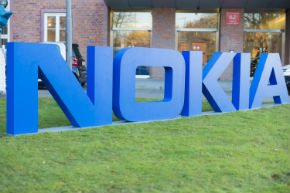Enterprise sales split into webscale/extra-large enterprise group, and group focused on transportation, energy and the public sector
Rajeev Suri, CEO of Nokia, this week discussed how the company’s “laser-like focus” on enterprise sales has led to a number of new customer wins.
“We have split our enterprise sales organization into two groups,” he said on a Q3 earnings calls with investors. “One focused on webscale and extra large enterprises [XLE] that use technology as a competitive advantage and the other focused on our target vertical markets of transportation, energy and the public sector.” He said for both groups orders are up by double digits; on the webscale side, sales are up by double digits, and in the mid-single digits for the enterprise side.
“On the webscale XLE side we have added 27 new customers so far this year including Xiaomi and the China Pacific Insurance Company. This is a critical footprint to gain given the longer-term migration of traffic and large backbone networks from telecom operators to internet players. We expect that to grow even more.” Suri said the enterprise sales group added 40 new customers with “particular strength” in the public sector and utilities, as well as a positive outlook for potential sales as public safety networks are upgraded to LTE.
For its networks business, Nokia saw a 9% year-over-year decrease, which the company said is “reflecting challenges related to market conditions and certain projects in mobile networks, primarily in North America and Greater China. Year-over-year sales for IP networks and applications, and global services were up by 2% on a constant currency basis.
Here’s a complete webcast of the earnings call.
Speaking about the decline in networks sales, Suri offered “a frank perspective on where we currently stand…Our current view is that we will see a full year 2017 decline, compared to 2016, in our primary addressable market of approximately 4% to 5%. When we look into 2018, we think conditions will continue to be difficult…This of course begs the question of what is going on.”
He pointed to three main drivers, all related to “multiple technology transitions. 4G to 5G is the most obvious, but also copper to fiber, physical to virtual, 100G to 400G, from terabit to petabit-class routers, and more. These transitions slow spending and increase uncertainty related to timing.”
He expects the 5G base to pick up starting in 2019, and noted that unlike previous generations, “5G solutions require much more than radio. Cloud core, IP routing, transport of many kinds, fixed wireless access, software defined networking, software orchestration, and more, are all essential. And Nokia is one of the very few companies that is able to meet all those needs.”

